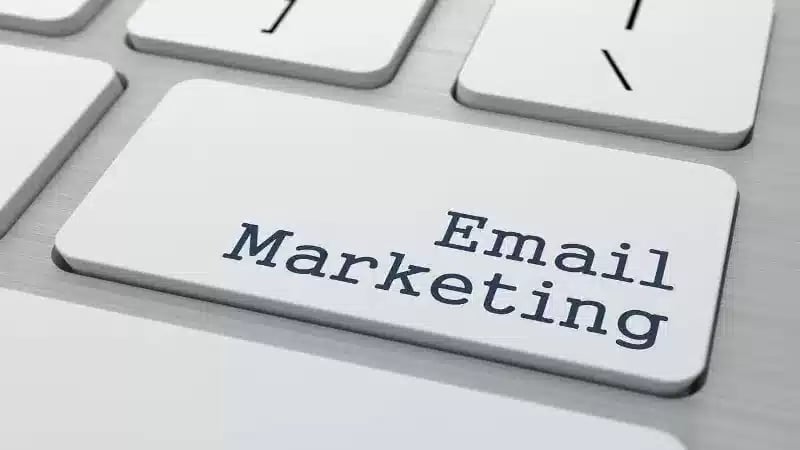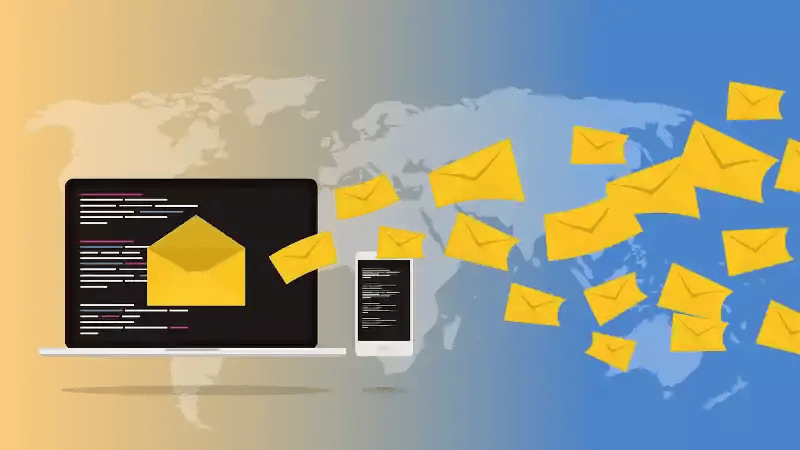Ghid pentru e-mail marketing
E-mail marketingul a luat amploare la începutul secolului XXI, odată cu răspândirea conturilor personale de e-mail. Poate că v-ați întrebat cum să faceți cel mai bine marketing prin e-mail sau dacă e-mail marketing mai este sau nu relevant. Acestea sunt întrebări valide. Ceea ce urmează sunt câteva răspunsuri concrete pentru dvs.
A murit e-mail marketing?
Emailul și, prin extensie, email marketingul nu este în niciun caz mort. Noi susținem contrariul: nu a existat niciodată un moment mai bun pentru a vă intensifica jocul de email marketing.*
Email-ul nu pleacă nicăieri
Acest mic "*" este acolo pentru un motiv. În timp ce noi susținem din toată inima e-mailul ca parte integrantă a oricărei campanii de marketing bine închegate, celălalt adevăr este că atitudinea față de e-mail s-a schimbat în ultimii ani. Ratele de deschidere pentru multe campanii de marketing sunt în scădere; este adevărat. Dar, în același timp, e-mailul ca mediu câștigă popularitate. 73% dintre Millennials spun că preferă să primească informații de marketing prin intermediul acestui canal în detrimentul tuturor celorlalte (social media, texte, copii pe hârtie etc.).
În plus, un procent colosal de 99% din publicul larg care utilizează internetul utilizează e-mailul și declară că îl verifică cel puțin o dată pe zi.
Acordați atenție experienței utilizatorului
Iată, avertismentul pe care îl știați că urmează. E-mailul este o alegere solidă de mediu pentru a vă răspândi mesajul. Nu doar atât, este o modalitate incredibil de bună de a ajunge la generația Millennials, cea mai mare de până acum.
Dar trebuie să faci câteva lucruri diferit.
Și majoritatea acestor lucruri se învârt în jurul experienței utilizatorului; adică, este vorba despre modul în care cititorul tău interacționează cu informațiile pe care le împărtășești și le digeră. De exemplu, dacă trimiteți e-mailuri numai atunci când aveți de făcut o prezentare de vânzări, veți pierde cititori. Rapid.
Trebuie să amestecați lucrurile în zilele noastre; trimiteți contactelor dvs. un buletin informativ regulat plin de fapte interesante și relevante despre industria dvs. și locul companiei dvs. Trimiteți câteva oferte exclusive doar pentru abonați. Trimiteți linkuri către articole de gândire publicate recent pe blogul dvs.
Toate acestea sunt menite să mențină publicul implicat în mesajul dvs. Ofertele exclusive le arată că apreciați faptul că au optat pentru abonament, iar linkurile către blog le arată că faceți mai mult decât să vindeți widget-uri.
Și, în cele din urmă, personalizați mesajul. De la o linie de subiect atrăgătoare la conținut personalizat, lăsați publicul să știe că îl înțelegeți și că îi prețuiți timpul și atenția. Spuneți-le că nu aveți de gând să irosiți această încredere prezentându-le 24/7 sau trimițându-le link-uri care nu contează pentru ei sau pentru viața lor.
Cele mai bune practici de e-mail marketing
Deci da, atunci când este făcut corect, e-mail marketing rămâne o modalitate solidă de a genera clienți potențiali și de a converti clienți potențiali pentru afacerea dvs.
Iată câteva dintre cele mai bune practici de marketing prin e-mail pentru a vă ajuta să generați mai mulți clienți potențiali.
1. Nu cumpărați niciodată liste de contacte
Întreaga campanie de e-mail depinde de ratele de deschidere. Dacă contactați persoane ale căror informații le-ați cumpărat mai degrabă decât să câștigați informațiile dintr-o interacțiune anterioară, veți vedea că performanța e-mailurilor dvs. scade. De asemenea, GDPR (Regulamentul general al UE privind protecția datelor) necesită consimțământul fiecărui destinatar european înainte de a vă contacta, iar listele cumpărate de obicei nu au acest consimțământ.
2. Nu folosiți no-reply în adresa expeditorului
Acest lucru împiedică destinatarii să răspundă sau să se retragă, ceea ce este o problemă, deoarece CAN-SPAM (Controlling the Assault of Non-Solicited Pornography and Marketing Act of 2003) protejează dreptul destinatarilor de a se retrage oricând. În plus, clienții dvs. sunt mai predispuși să deschidă e-mailurile de la cineva, chiar și doar cu numele mic. Nu îngreunați nimănui posibilitatea de a oferi feedback.
3. Mențineți dezordinea vizuală la un nivel minim
Nu utilizați niciodată mai mult de un maxim absolut de trei fonturi și nu solicitați destinatarilor să defileze orizontal pentru a vedea întregul e-mail.
4. Optimizați textul de previzualizare
Personalizați textul de previzualizare, în general primele câteva cuvinte din corpul e-mailului. Nu lăsați sistemul dvs. de e-mail să introducă mesaje pe care nu le doriți ca parte a textului de previzualizare. Acest lucru se poate face, de obicei, prin intermediul instrumentului dvs. de automatizare a marketingului.
5. Utilizați o semnătură de e-mail
Oamenii sunt înclinați să citească și să asculte e-mailul dvs. dacă știu că provine de la cineva, deci includeți semnătura unei persoane reale.
6. Mențineți o listă de e-mail curată
Rata dvs. de deschidere se scufundă atunci când păstrați adresele persoanelor care nu au optat pentru excludere, dar care nu vă deschid niciodată e-mailurile. În mod regulat, găsiți-i pe cei care nu s-au angajat pentru o perioadă specificată și curățați-i din lista dvs.
7. Acordați atenție conținutului dvs. above-the-fold
Până la 70% dintre destinatari nu vor vedea apelul la acțiune (CTA) dacă acesta este sub fold (necesită derulare). Includeți mai multe CTA-uri în e-mail, în locuri și formate diferite, asigurându-vă că cel puțin unul este deasupra pliului. Păstrați mesajul principal deasupra pliului, de asemenea.
8. Deveniți personal
Oamenilor le place să primească mesaje personalizate. S-ar putea să știe că software-ul a făcut-o, dar tot pare personal, iar lor le place asta. Așadar, folosiți-vă instrumentele de e-mail pentru a configura salutul de e-mail astfel încât să includă automat numele fiecărui destinatar în salutul de e-mail.
9. Utilizați e-mailuri de bun venit
Acest lucru pune bazele unei relații puternice, verificând în același timp livrabilitatea, ceea ce, la rândul său, vă ajută să vă păstrați lista curată. Dacă e-mailul de bun venit generează un hard bounce, știți că trebuie să eliminați adresa din lista dvs.
Mesajul de bun venit confirmă, de asemenea, că înscrierea a funcționat și le permite oamenilor să știe că ceea ce au solicitat este pe drum. Oferiți ceva valoros sau exclusiv pentru noua înscriere și îmbunătățiți rata de click-through.
11. Utilizați un link de confirmare pentru opt-in
Se pare că există o ură aproape universală în rândul marketerilor pentru acest lucru. Raționamentul pare să fie că insistarea oamenilor să treacă printr-un pas suplimentar va reduce numărul de opt-in-uri și va avea un impact negativ asupra metricilor. Noi răspundem cu următorul argument: calitatea bate cantitatea. Acest pas suplimentar îi poate determina pe unii oameni să renunțe la proces. Cu toate acestea, cei care rămân cu el pentru acel clic suplimentar demonstrează o dorință mai puternică de a primi comunicări de la dvs., iar pentru noi, asta sună ca un contact mai bun.
12. Faceți o mulțime de teste A/B
Majoritatea conținutului de marketing digital poate fi îmbunătățit folosind testele A/B sau split. Vă împărțiți destinatarii în segmente, apoi trimiteți versiuni diferite ale e-mailului dvs. către fiecare dintre aceste segmente, schimbând un lucru. Acesta poate fi o linie de subiect diferită, un apel la acțiune sau un element de stil. Vedeți care variantă generează mai multe deschideri sau orice altă acțiune.
13. Testați pentru a determina cea mai eficientă frecvență
Undermailing-ul duce la venituri ratate, o reputație mai slabă a expeditorului, dificultăți în menținerea unei liste curate și lipsă de prezență în inbox. Suprasolicitarea duce la scăderea implicării, creșterea numărului de opt-out-uri și reducerea vizibilității. Trebuie să testați segmente ale audienței dvs. pentru a determina frecvența optimă pentru dvs.
14. Fiți prudent cu stimulentele pentru a crește ratele de deschidere
Nu copleșiți cititorii cu e-mailuri legate de produse. Loialitatea clienților începe atunci când le oferiți informații despre industrie și alte informații utile. Apoi, puteți vorbi despre afaceri și puteți folosi stimulente pentru a crește ratele de deschidere.
15. Furnizați un CTA pentru abonare
Presupuneți că cititorii dvs. iubesc conținutul dvs. și transmit e-mailurile dvs. prietenilor lor pentru a le verifica. Furnizați un CTA mic, dar vizibil, astfel încât acești noi cititori să se poată abona. Din moment ce e-mailul dvs. conduce probabil la o altă acțiune, cum ar fi descărcarea de conținut, asigurați-vă că acest buton de abonare nu distrage atenția sau nu creează confuzie.
16. Elaborați cu atenție liniile de subiect
Fă-le convingătoare și concise. Înțelepciunea convențională spune între 30 și 50 de caractere. Ar trebui să creeze un sentiment de urgență, oferind în același timp cititorilor o indicație despre ce să aștepte. Fă-ți timp pentru a testa A/B liniile de subiect, astfel încât să te poți baza pe ceea ce spun datele, nu doar pe intuiția ta. Utilizați cuvinte puternice, întrebări, expresii idiomatice și alte tactici care credeți că vă vor capta publicul.
17. Legați e-mailurile de paginile de destinație
Acestea ar trebui să se potrivească în ceea ce privește titlul, copia și conținutul. Aspectul și senzația ar trebui să se potrivească. Consecvența construiește încrederea clientului în conținutul tău. Asigurați-vă că utilizați instrumente de urmărire pentru a vedea care e-mailuri și pagini de destinație au avut cele mai bune rezultate, astfel încât să puteți continua să trimiteți ceea ce funcționează.
18. Spuneți o poveste
Conținutul captivant duce la mai multe click-uri. Uitați-vă la buletinele dvs. de e-mail preferate. Probabil că veți găsi câteva puncte comune. Acestea spun povești interesante, oferă articole care te fac să te gândești, te țin la curent cu știrile din industrie sau poate te fac să râzi cu un scurt videoclip. Este într-adevăr un clișeu, dar trebuie să fii creativ.
19. Nu uitați să proiectați pentru accesibilitate
Nu uitați să îi includeți pe toți acei posibili membri ai publicului cu dificultăți vizuale. Adăugați text ALT la imaginile dvs. astfel încât persoanele care utilizează un cititor de ecran să poată înțelege mai bine conținutul. Adăugați un punct după textul imaginii, astfel încât cititorul de ecran să facă o pauză, permițând o înțelegere mai ușoară a e-mailului dvs. De asemenea, puteți ajusta raportul de contrast al imaginii pentru a maximiza lizibilitatea.
20. Îmbrățișați skimmerii
Acest lucru poate fi greu de auzit, dar nu toată lumea din publicul dvs. va citi buletinul dvs. electronic. Acest lucru este valabil de două ori pentru pitch-urile tale și mesajele cu oferte speciale. Iar acest lucru este în regulă. Aceasta vă permite să vă faceți punctele cele mai importante mai ușor de văzut prin utilizarea de subtitluri și text de ancorare care face posibilă digerarea punctului principal prin parcurgerea mesajului de sus în jos. Iar acest lucru, la rândul său, va face mesajul mai accesibil pentru a fi digerat de toată lumea, skimmers și cititori temeinici deopotrivă.
21. Fii un profesionist
Utilizarea unei soluții de email marketing face multe lucruri pentru a vă ajuta în campanii. Principalul dintre acestea este că este mult mai probabil ca mesajele dvs. să ocolească dosarul de spam și să ajungă în inbox-ul publicului dvs. Multe dintre aceste instrumente disponibile în comerț includ, de asemenea, tablouri de bord detaliate pentru metricile tale, deci acesta este un mare bonus.
22. Segmentați pentru un angajament mai bun
Nimic nu îndepărtează un cititor mai repede decât să citească ceva care nu contează pentru el. Utilizați soluția dvs. de e-mail marketing pentru a vă segmenta lista de contacte. Fie în funcție de geografie, familie de produse sau orice categorie are sens pentru lista ta, trimiterea de conținut personalizat pentru fiecare segment asigură că publicul tău va rămâne implicat și că informațiile corecte ajung la persoanele potrivite.
Să trimiteți sau să nu trimiteți e-mailuri de tip blast?
Sperăm că acest articol v-a convins că e-mailul este aici pentru a rămâne. Ce înseamnă acest lucru pentru întrebarea: Să trimiteți sau să nu trimiteți e-mailuri de tip blast? Ne-ați urî dacă v-am spune: "Depinde"?
Iată procesul nostru ușor de urmat, în 3 pași, pentru a determina dacă email blastele sunt viabile pentru tine și situația ta unică de marketing. Uitați-vă la campaniile dvs. actuale și la cele în curs de dezvoltare. Treceți-le prin acești pași. Apoi, după ce ați parcurs toți pașii, puteți decide dacă un email blast vă va ajuta să vă atingeți planul și obiectivele de marketing.
Pasul 1: Ce este, totuși, un e-mail blast?
Nu este doar un e-mail de grup? Ce este atât de controversat în asta? Da și nu, și vom ajunge la asta. Potrivit liderului industriei HubSpot, un email blast este definit ca:
"...un mesaj e-mail generic trimis către o listă uriașă de destinatari nesegmentari. Un copil de poster al abordării de marketing de tip spray-and-pray, e-mailurile blastice sunt de obicei considerate spam."
Cuvintele-cheie sunt "generic" și "nesegmentat". Iar acest lucru se referă la punctul 22 de mai sus. V-ați întrebat vreodată de ce acea companie de la care ați cumpărat acel widget cu ani în urmă încă vă mai trimite e-mailuri despre celălalt produs al lor, care nu are nicio legătură? Pentru că se angajează în e-mail marketing în masă și trimite acest mesaj întregii baze de date de contacte, indiferent de relevanța sa pentru o anumită persoană sau un anumit segment al audienței lor generale.
Comparați și contrastați acest lucru cu o campanie de e-mail cu versiuni personalizate ale acelui mesaj. Astfel, noul produs este promovat doar persoanelor care au cumpărat ultima versiune a aceluiași produs. Unii specialiști în marketing vor spune că este același lucru, în esență. Noi nu suntem deloc de acord. E-mailurile atent personalizate au rate mai mari de implicare, iar e-mailurile de grup trimise către liste mai mici, atent segmentate, sunt, de asemenea, mai puțin susceptibile de a declanșa filtre automate de spam.
Fiecare metodă poate avea un loc într-o campanie de marketing modernă bine închegată; în continuare, analizăm avantajele și dezavantajele pentru a vă ajuta să decideți dacă campania dvs. poate beneficia de un blast.
Pasul 2: Luați în considerare avantajele unui e-mail blast
În primul și în primul rând, în ceea ce privește argumentele pro, este vorba de acoperire. Cât de mare este lista dvs. completă de contacte? Aceasta este raza potențială de acțiune a unui e-mail blast. Pentru unele actualizări ale companiei, aceasta este cu adevărat cea mai bună opțiune.
Aveți o funcție nouă despre care doriți să vă asigurați că toată lumea știe? Lansați-o.
Trimiterea de e-mailuri este, de asemenea, o modalitate fantastică de a colecta feedback-ul utilizatorilor; trimiteți un sondaj sau un chestionar tuturor și colectați un eșantion transversal de răspunsuri pentru a lua pulsul bazei dvs. de utilizatori. Luați în considerare această opțiune pentru proiectele de cercetare interne sau pentru colectarea de date pentru un whitepaper. Aceste cazuri de utilizare beneficiază de o viziune nesegmentată și nu există o modalitate mai bună de a obține acest lucru decât prin intermediul unui sondaj la scară largă.
Pasul 3: Luați în considerare dezavantajele aceluiași e-mail de tip blast.
Amintiți-vă că clienții dvs. nu sunt un pilon monolitic de uniformitate. Aveți produse și servicii diferite, iar utilizatorii fiecăruia variază probabil la fel de mult sau mai mult decât aceste oferte. Cu siguranță, va exista o încrucișare, dar baza de utilizatori a fiecărui produs ar trebui să fie considerată segmentul său unic.
În prezent , până la 85% din e-mailuri sunt considerate spam. Aceasta înseamnă că, cu cât o persoană primește mai multe e-mailuri nedorite, nesolicitate sau nepotrivite de la dvs., cu atât este mai probabil să se dezangajeze sau pur și simplu să le marcheze ca spam și să treacă mai departe. De fiecare dată când cineva face acest lucru, reputația expeditorului dvs. este afectată. Reputația expeditorului este o colecție de parametri pe care ISP-urile și furnizorii de servicii de e-mail îi utilizează pentru a determina expeditorii cărora să le permită accesul și pe care să îi trimită în spam sau, mai rău, să îi pună complet pe lista neagră.
Sunt șanse ca lista dvs. de contacte să conțină și persoane care nu sunt clienți. Investitorii, organizațiile partenere sau vânzătorii nu au nevoie să audă despre ultima actualizare a ofertelor dvs. Iar volumul de e-mailuri pe care aceștia sunt susceptibili să le vadă într-o anumită zi înseamnă că s-ar putea să se simtă jigniți de primirea unui astfel de zgomot nedorit în căsuța lor de primire.
Anchetele și sondajele menționate mai sus? Gândiți-vă cât de diferite ar putea fi ratele de răspuns dacă ați trimite versiuni ușor diferite fiecărui segment al listei dvs. Mesajele personalizate înregistrează în mod universal rate de deschidere mai mari, ceea ce poate îmbunătăți considerabil reputația expeditorului dvs.
Pasul bonus 4: Cele mai bune practici în materie de blast
După ce parcurgeți cei trei pași de mai sus, este posibil să decideți că utilizarea judicioasă a e-mailurilor blaste are sens pentru campania dvs. actuală. Grozav. Faceți-ne o favoare. Urmați câteva bune practici. Acestea vă asigură că nu veți suferi nicio consecință negativă (cum ar fi o reputație scăzută a expeditorului) și vă pot ajuta chiar să vă îmbunătățiți rezultatele.
-
Păstrați fiecare mesaj scurt și la obiect.
-
Asigurați-vă că linia subiectului corespunde conținutului care urmează
-
Ajungeți rapid la conținutul respectiv
-
Includeți un CTA deasupra foii
-
Asigurați-vă că opțiunea de dezabonare este clară și ușor de găsit
-
Asigurați-vă că formatarea e-mailului dvs. este prietenoasă cu dispozitivele mobile (peste jumătate din toate e-mailurile sunt citite de pe dispozitive mobile)
Răspunsul nostru ușor sarcastic "depinde" are mai mult sens acum? Există momente și locuri în care un e-mail blast bine planificat poate face minuni pentru campaniile dvs., oferind impulsul necesar pentru a pune pe deplin în funcțiune o campanie.
Și există momente și locuri în care chiar și cel mai bine gândit și cel mai bine intenționat blast nu poate face altceva decât să vă îndepărteze clienții și să vă strice reputația expeditorului pentru viitoarele campanii de e-mail.
În cele din urmă, trebuie să fie decizia dumneavoastră. Sperăm că această parte a articolului nostru v-a dat de gândit și v-a ajutat să luați o decizie în cunoștință de cauză atunci când va veni momentul să răspundeți la întrebarea "să trimiteți sau să nu trimiteți un mesaj de tip blast".
Acest conținut este disponibil și în:
- Germană: Ihr ultimativer Leitfaden zum E-Mail-Marketing
- Engleză: Your Ultimate Guide to Email Marketing
- Spaniolă: Guía del marketing por correo electrónico
- Franceză: Votre guide ultime du marketing par courriel
- Italiană: La guida all'email marketing
- Chineză: 电子邮件营销终极指南











Lasă un comentariu cu părerea ta.